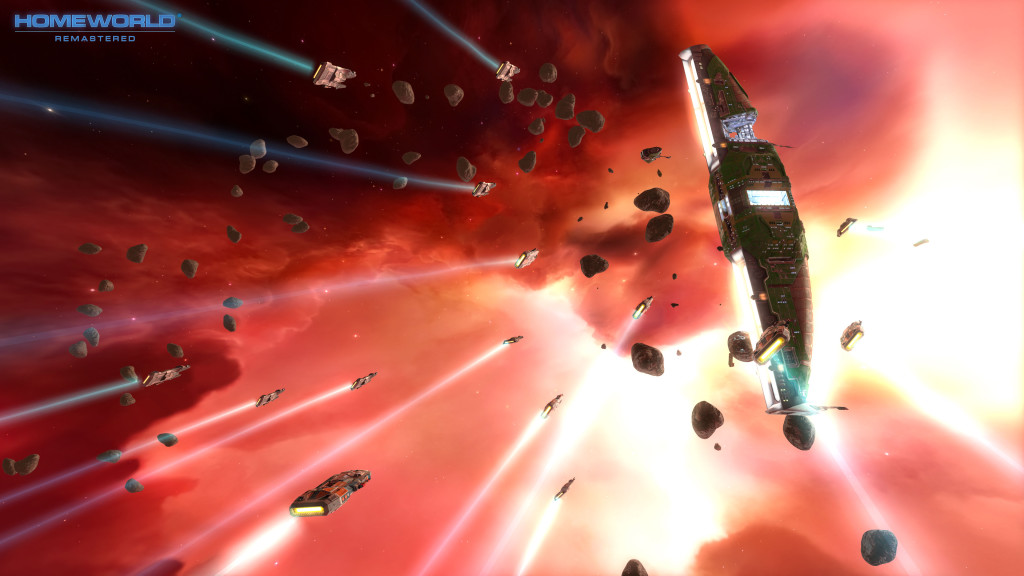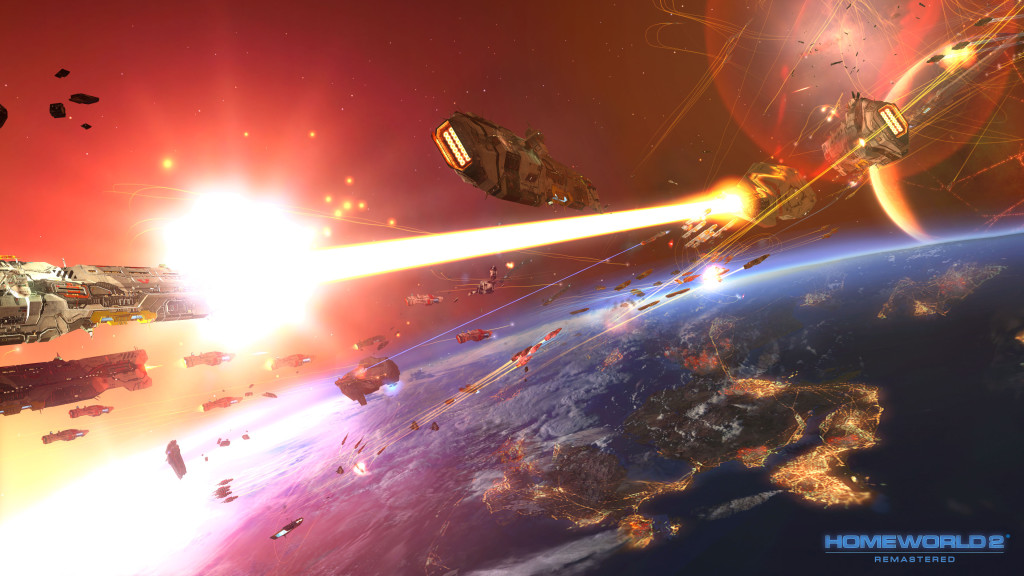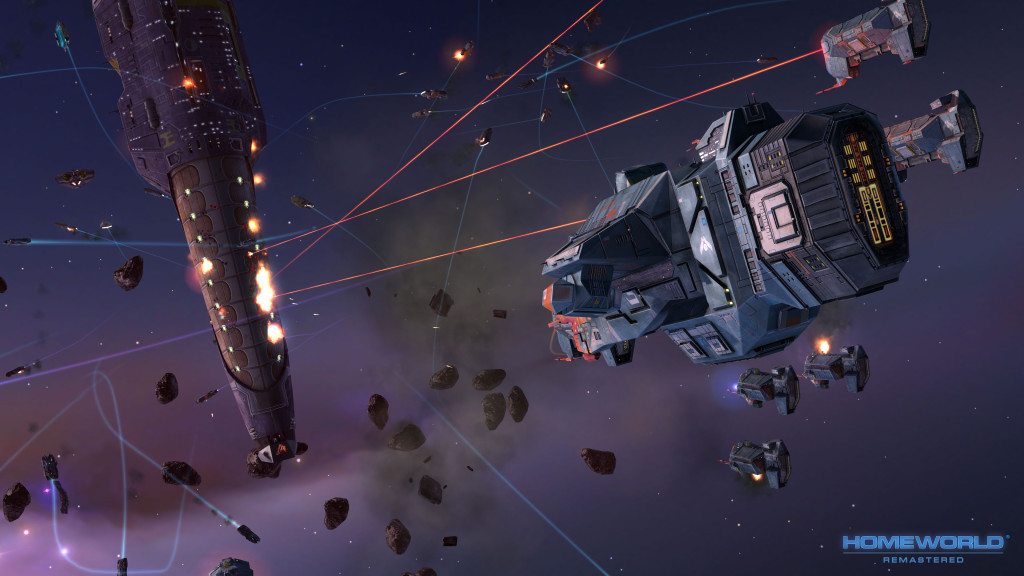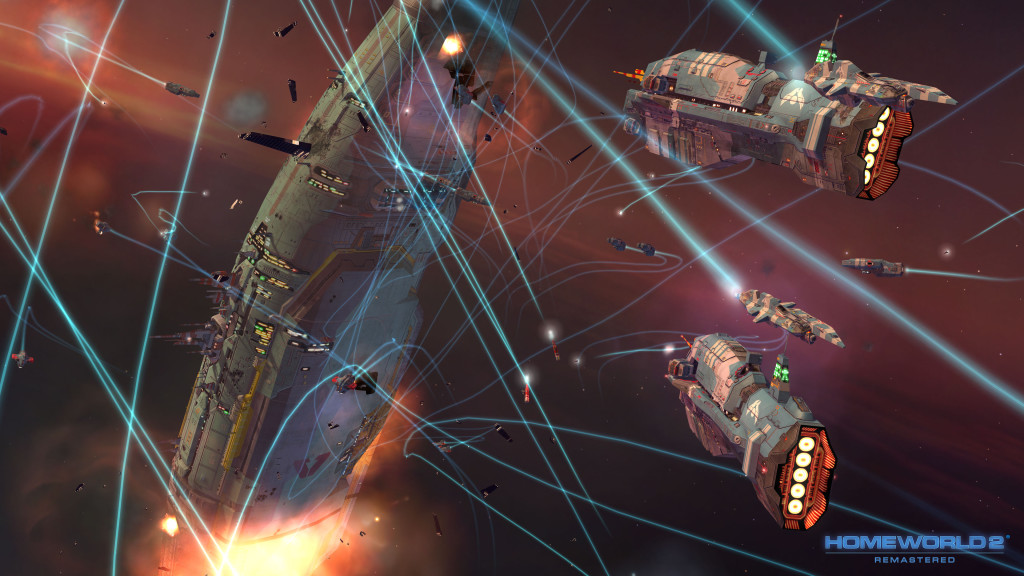
Real-time strategy games haven’t had an easy time recently. MOBAs and eSports continue to eat away at their former niche in the market, and the inability to play them on consoles means most of the big names shy away from the genre entirely. However, if we can’t seem to get a new RTS going, we’ve got a pretty good back catalog to look back on, and one of the most beloved titles in that catalog are the two Homeworld games, both of which started Relic’s rise to the top of the RTS game.
Remasters have been a big deal on consoles for a few years now, but aren’t quite as common on PC, which is partly because many games still run fine on newer hardware. That said, many games that released before everything went digital have seen a re-release on Steam or GOG, which specializes in tuning older games to run on new versions of Windows out of the box. Homeworld is one of those that slipped through the cracks, though. Critically praised and loved by its fans, Homeworld saw its developer and publisher become owned by different corporate entities, and the associated legal entanglements kept it unreleased on digital storefronts.

When it came out, Homeworld was a bit of a change from the formula. For one, there wasn’t the usual focus on frantic base-building. There’s still an economy to manage, which puts it apart from other games like Ground Control and Dawn of War II that were more about tactics than long-term strategy. Homeworld kept the economy of more traditional games while focusing on more tactical combat. The fact that this all happens in space does add a layer of complexity to it all, and really shifts the focus to fleet management instead of holding strategic positions or terrain. Finally, you keep your fleet as you progress through, which really ties a campaign together, as you don’t build up a fleet in one mission only to have it disappear upon starting the next.
In this remaster, everything looks a lot better and the modern conveniences we come to expect from PC games in 2015 have been implemented. It’s clear that effort was taken not only to touch things up, but also to preserve what was there from the start. Homeworld 2 still feels like a big improvement over the original, even if it isn’t a graphical leap anymore. As a result, it’s still best to start with the original, as otherwise the sequel’s changes will feel like they are missing in the first game.

The second game’s mission structure is a bit better, and controlling units is far easier, largely due to squadrons functioning as individual units instead of becoming a micromanagement nightmare. That said, the story of the first game was and still is superior, though this is typical for sequels of the time, as there was no assumption that one would get made when the first game was in development. Many of the nuances of each game remain as they were when the games were new. This was a smart move: despite the temptation to tinker, Gearbox knew going in that the biggest audience here would be old fans looking to relive the past, not new players looking for some kind of new game-changing RTS.
Another nice touch in the collection is the inclusion of digital versions of the two original games. I don’t see anyone using them much instead of the improved versions, but it’s nice to have them there if you ever get an urge to play it like it used to be without having to dig around for old discs.

Sometimes an HD remaster is another kick at the can, to see if you can squeeze more sales out of old work. However, Homeworld Remastered really shows that the people working on this played the originals and wanted to do it right. Anyone who fondly looks back at Homeworld, or missed it and wants something different in an RTS, should check this one out.
Pros: New but true to the original, comes with a digital port of the original
Cons: Some of the old hangups are still there



















